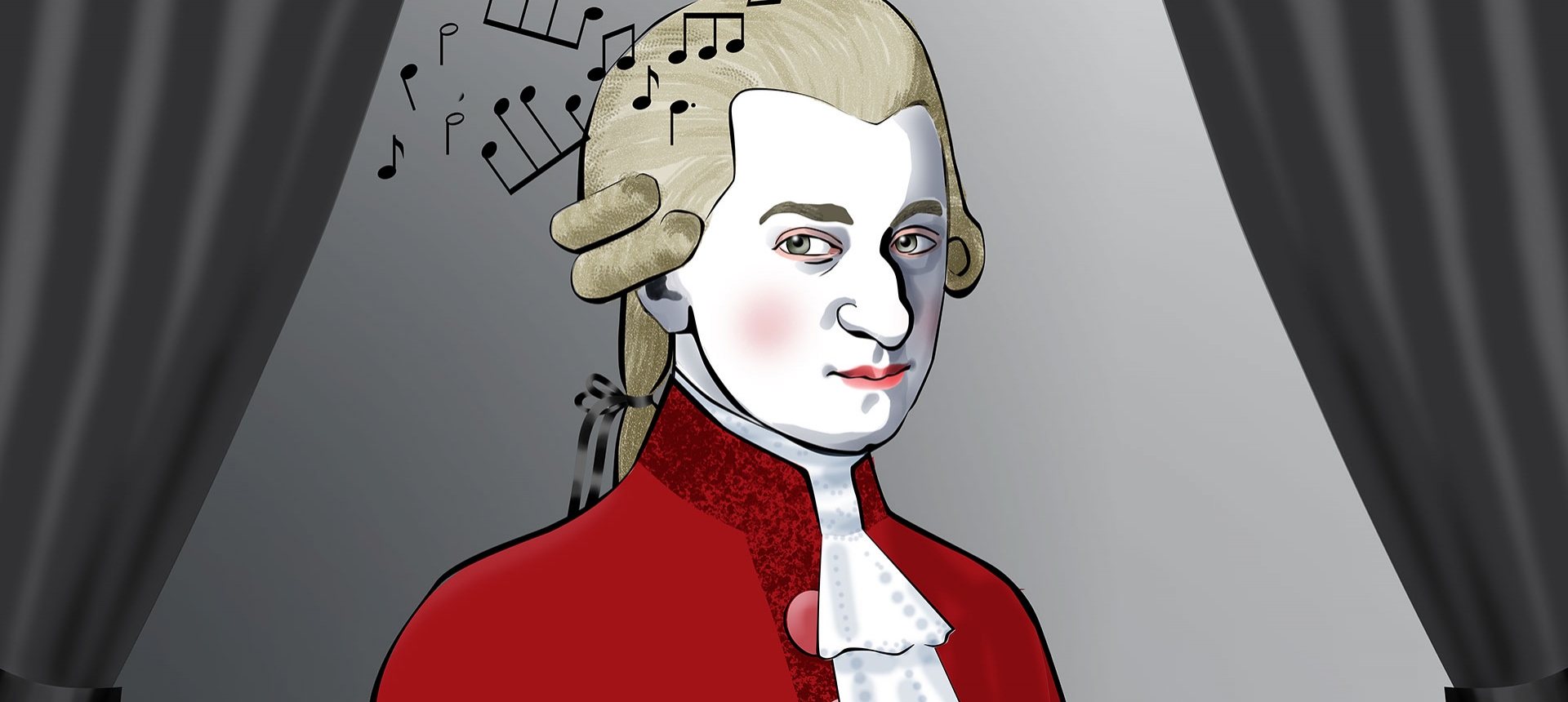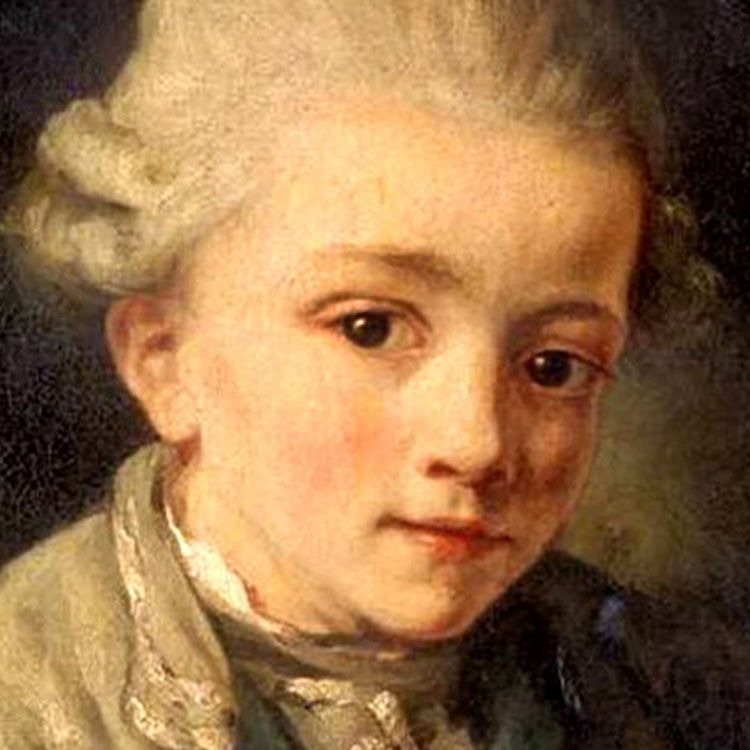Wolfgang Amadeus Mozart is from the Rococo – the art style that is balanced, neat, clear and distinct. Just like Mozart’s music. Just like his music. The fact that the style occasionally allows dark features to emerge gives these elements an even stronger effect.
He was positive and cheerful and this in combination with an exceptional musical talent makes his music often seem to glide forward like on clouds. He was a master of the piano and a rascal on the violin – and often broke.
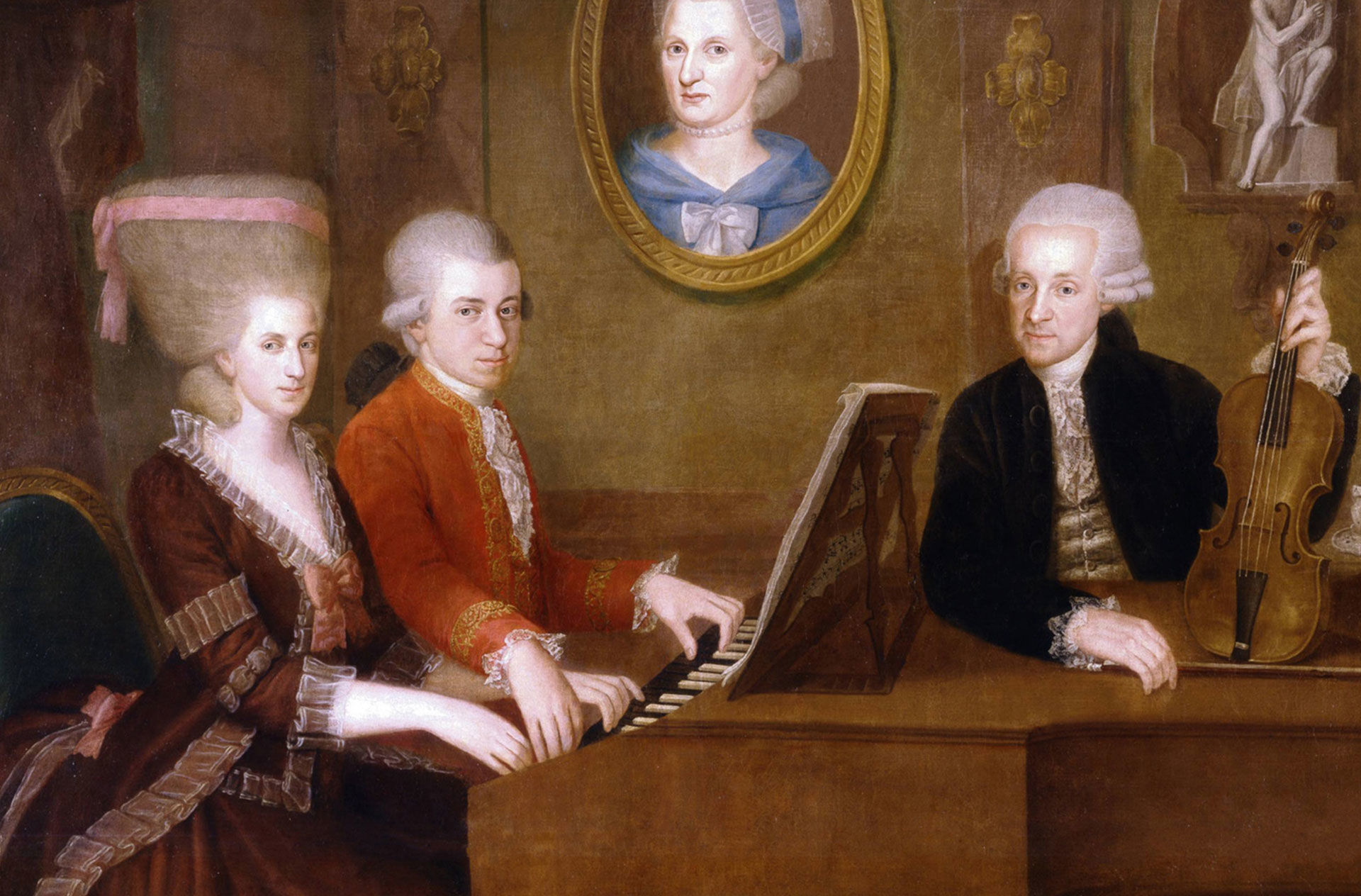
Life in Mozart’s time was uncomplicated – the church and the princes ruled, the people were tolerant or lived in poverty depending on the government and the economy. The impending French revolution is not noticeable in Mozart – it had an even stronger impact both politically and musically on his successor Beethoven.
More about Wolfgang Amadeus Mozart
Mozart’s (1756-1791) life as a touring prodigy with the equally prominent sister Nannerl was not always a dance on roses, the violin-playing father Leopold was strict and demanding. Which was perhaps a prerequisite for Mozart’s productivity and worldly success.
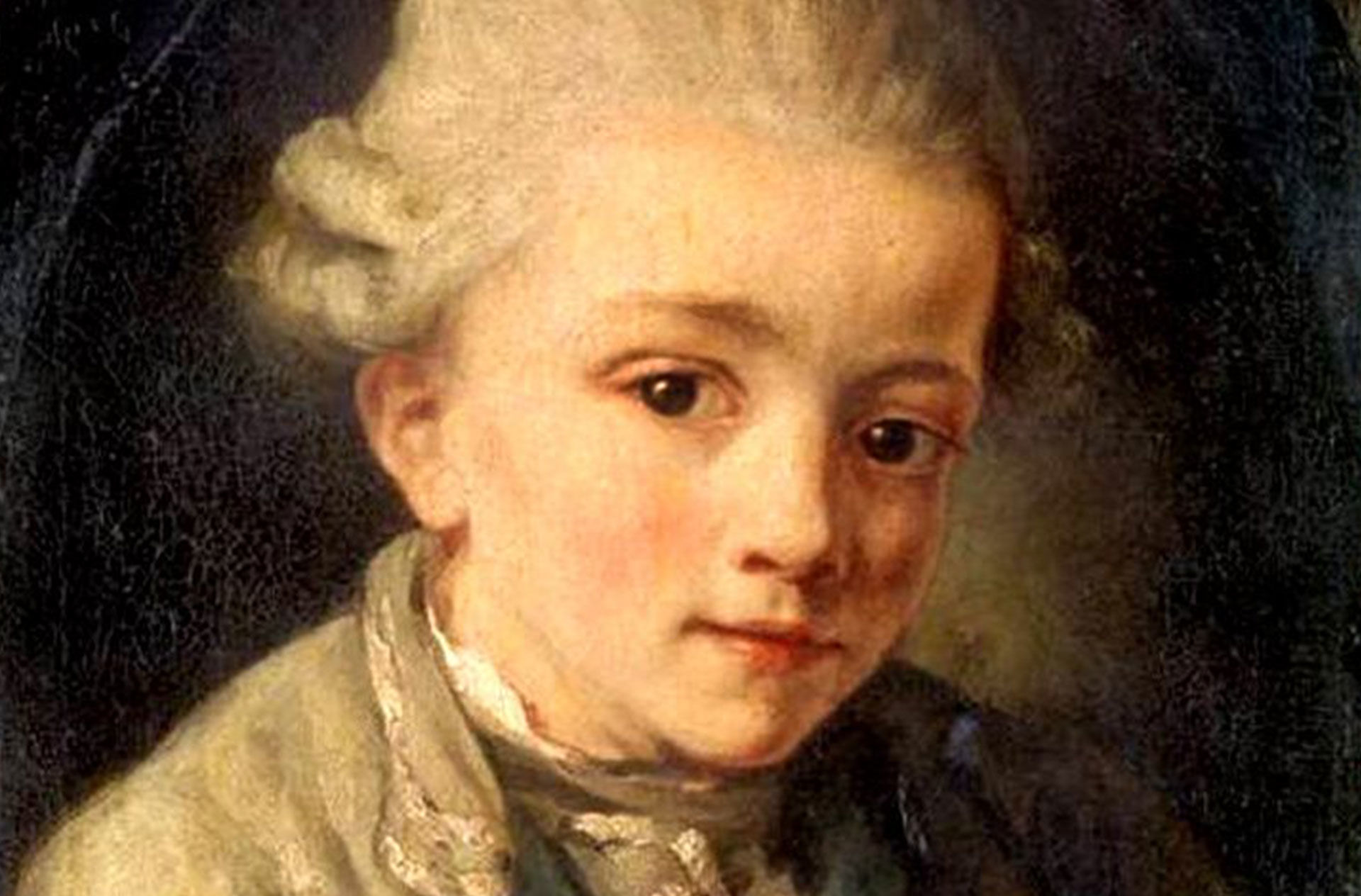
He was a master of the piano and a rascal of the violin – he himself played most of his piano and violin concertos with bravura. After serving the prince and archbishop of Salzburg, Mozart became a freelancer and made good money on his own subscription concerts, profitable opera orders and exclusive performances. The audience got delicacies such as the twenty-first piano concerto, the operas The Magic Flute and Figaro’s wedding, the Big C minor Mass and lots of instrumental music.
At the same time, he, his wife Constanze and his family lived off their assets. Mozart was often broke and had to borrow money from his Masonic brothers. Towards the end it was much worse, yet he composed the masterful last three symphonies – No. 39, 40 and 41 which he does not seem to have performed during his lifetime – and the almost completed requiem, a mass of death in which all his ability and experience are gathered.
He died of disease in Vienna on December 5, 1791, aged 35 years.
Listen
The playlist feeds you with magical tones by Mozart!
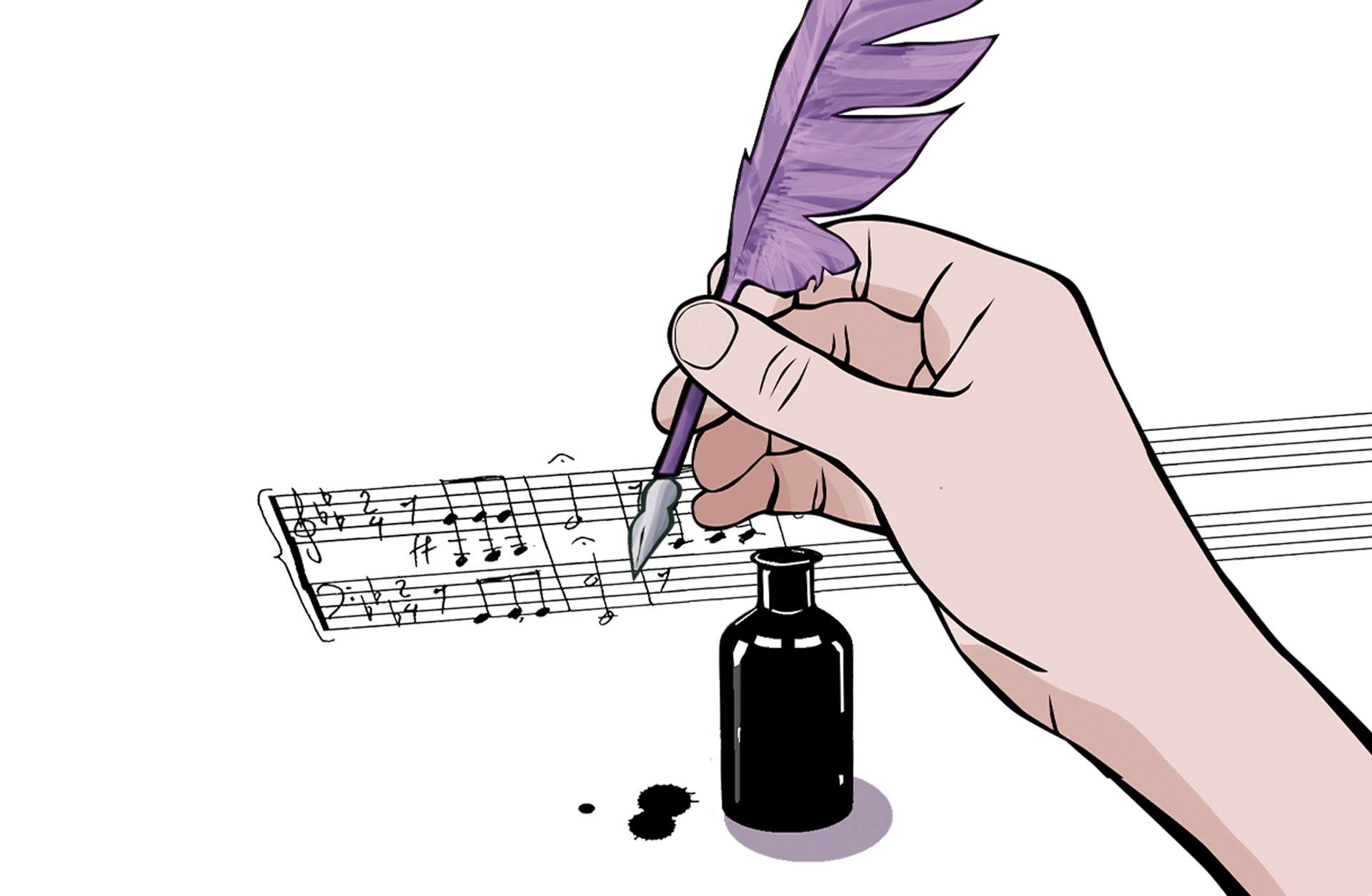
The composers behind the most famous masterpieces
Take the opportunity to get to know some of the composers behind the most famous classical masterpieces and listen to their music. Maybe it will be the start of a lifelong friendship.

